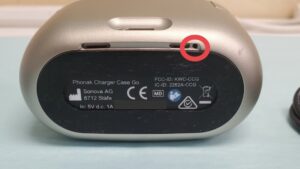Looking to learn how to hook up a trickle charger? You’ve come to the right place! In this article, we’ll guide you through the simple steps to connect your trickle charger and keep your battery juiced up. Whether you’re a beginner or experienced, our conversational approach and easy-to-follow instructions will ensure you’re on the right track. So, let’s dive right in and get your battery charging efficiently!
How to Hook Up a Trickle Charger: A Comprehensive Guide
Introduction
Before we dive into the details of hooking up a trickle charger, let’s quickly understand what a trickle charger is and why it’s useful. A trickle charger is a device designed to provide a slow and continuous charge to a battery, helping to maintain its optimal charge level over an extended period. It is commonly used for vehicles, boats, motorcycles, and other battery-powered equipment that are not in regular use. Now, let’s explore step-by-step how to hook up a trickle charger to ensure the longevity and performance of your battery.
Step 1: Gather the Necessary Tools
Before you begin, it’s important to gather the necessary tools to ensure a smooth and successful trickle charging process. Here’s a list of tools you’ll need:
- Trickle charger
- Extension cord (if needed)
- Protective gloves
- Safety glasses
- Wire brush or battery terminal cleaner
- Distilled water (if your battery requires maintenance)
Step 2: Safety First
Safety should always be a top priority when working with batteries and electrical systems. Follow these safety precautions before starting the trickle charging process:
- Ensure that the charger is unplugged before connecting or disconnecting it from the battery.
- Wear protective gloves and safety glasses to protect yourself from any potential hazards.
- Make sure the area around the battery is well-ventilated to avoid the buildup of potentially explosive gases.
- If working near a vehicle, set the parking brake and wear appropriate protective gear.
Step 3: Locate the Battery
Identify the location of the battery in the vehicle or equipment that requires charging. In most vehicles, the battery can be found under the hood, while in some boats or motorcycles, it may be located in a compartment or a specific area. If necessary, consult the owner’s manual or seek professional guidance to locate the battery.
Step 4: Prepare the Battery
Before connecting the trickle charger, it’s essential to prepare the battery for optimal performance. Follow these steps to ensure the battery is ready for charging:
- Inspect the battery for any signs of damage, leakage, or corrosion. If you detect any issues, consider replacing or repairing the battery before proceeding with the charging process.
- If the battery has removable caps, carefully remove them to check the electrolyte levels. If needed, add distilled water to bring the electrolyte levels up to the recommended level. Be cautious not to overfill.
- Examine the battery terminals for any corrosion or buildup. Use a wire brush or battery terminal cleaner to clean the terminals thoroughly. This will help to establish a proper connection for charging.
Step 5: Connect the Trickle Charger
Now that the battery is prepared, follow these steps to connect the trickle charger securely:
- Identify the positive and negative terminals on the battery. The positive terminal is usually marked with a plus (+) sign, while the negative terminal is marked with a minus (-) sign.
- Attach the positive (red) clamp of the trickle charger to the positive terminal of the battery. Ensure a tight connection.
- Connect the negative (black) clamp of the trickle charger to a metal surface on the vehicle or equipment. This will serve as the grounding point for the charger.
Step 6: Plug in the Trickle Charger
With the trickle charger properly connected to the battery, it’s time to plug it in and start the charging process. Follow these guidelines:
- Ensure that the trickle charger is turned off or set to the “Trickle” or “Maintenance” mode, depending on the charger’s settings.
- Plug the charger into a grounded electrical outlet. If needed, use an extension cord to reach the outlet, ensuring it is rated for the charger’s power requirements.
- Double-check that all connections are secure and that there are no loose or exposed wires.
Step 7: Monitor the Charging Process
Once the trickle charger is plugged in, it will begin supplying a slow and continuous charge to the battery. It’s important to monitor the charging process to ensure everything is functioning correctly. Consider the following:
- Refer to the manufacturer’s instructions regarding the recommended charging time. Trickle charging typically takes longer than regular charging methods, as it provides a lower current.
- Keep an eye on the charger for any unusual sounds, smells, or overheating. If you notice anything out of the ordinary, immediately unplug the charger and assess the situation.
- Regularly check the battery’s voltage levels using a voltmeter to ensure it is charging properly. The voltage should gradually increase over time.
Step 8: Disconnect the Trickle Charger
After the recommended charging time, or when you believe the battery has reached an optimal charge level, it’s time to disconnect the trickle charger. Follow these steps:
- Turn off and unplug the trickle charger from the electrical outlet.
- Remove the negative (black) clamp from the grounding point on the vehicle or equipment.
- Detach the positive (red) clamp from the positive terminal of the battery.
Step 9: Post-Charging Battery Maintenance
To ensure the long-term performance of the battery, there are a few additional maintenance steps you can take:
- Clean the battery terminals and connections periodically to prevent corrosion buildup.
- Store the battery in a cool and dry location when not in use.
- Follow the manufacturer’s recommendations for periodic maintenance, such as equalization or desulfation cycles.
Congratulations! You have successfully learned how to hook up a trickle charger to maintain the optimal charge level of your battery. By following the steps outlined in this guide, you can ensure the longevity and performance of your battery, whether it be in a vehicle, boat, motorcycle, or any other battery-powered equipment. Remember to prioritize safety throughout the charging process and perform regular maintenance to maximize the battery’s lifespan. Happy charging!
Frequently Asked Questions
How do I hook up a trickle charger to my vehicle?
1. Start by locating the battery in your vehicle. It is usually located under the hood, but it can also be found in the trunk or under the rear seat in some cars.
2. Make sure both the vehicle and charger are turned off before proceeding.
3. Identify the positive and negative terminals on your battery. The positive terminal is usually marked with a “+” symbol, while the negative terminal is marked with a “-” symbol.
4. Connect the positive (red) clamp of the trickle charger to the positive terminal of your battery. Ensure it is securely attached.
5. Connect the negative (black) clamp of the trickle charger to either the negative terminal of your battery or a metal part of the vehicle’s chassis. Choose a clean and unpainted metal surface for a good connection.
6. Once the connections are secure, plug in the trickle charger to a power outlet.
7. Turn on the charger and follow the manufacturer’s instructions to set the appropriate charging mode, if applicable.
8. Leave the trickle charger connected for the recommended time, ensuring that it remains undisturbed and the vehicle is not started during this time.
9. When you are ready to disconnect the charger, turn off the charger and unplug it from the power outlet.
10. Remove the clamps from the battery terminals, starting with the negative (black) clamp and then the positive (red) clamp.
Can I leave a trickle charger connected to my vehicle battery indefinitely?
It is generally safe to leave a trickle charger connected to your vehicle battery for an extended period, as long as the charger’s voltage and current settings are suitable for maintaining the battery’s charge level. However, it is recommended to check the manufacturer’s instructions for any specific guidelines or limitations regarding continuous charging.
What precautions should I take when using a trickle charger?
Here are some precautions to keep in mind when using a trickle charger:
– Before connecting the charger, ensure that both the vehicle and charger are turned off.
– Make sure the charger’s voltage and current settings match the requirements of your vehicle’s battery.
– Connect the positive (red) clamp to the positive terminal and the negative (black) clamp to the negative terminal or a metal part of the vehicle’s chassis.
– Avoid using the charger near flammable materials.
– Follow the manufacturer’s instructions for safe use and maintenance of the trickle charger.
– Regularly inspect the charger and its cables for any signs of damage or wear.
– If you notice any unusual behavior or smell, immediately disconnect the charger and consult a professional.
Can I use a trickle charger on a motorcycle or other small vehicle?
Yes, you can use a trickle charger on motorcycles, ATVs, lawn mowers, and other small vehicles that have a battery. The process of connecting the charger to these vehicles is similar to that of a car battery. Just make sure to follow the manufacturer’s instructions and use a charger suitable for the battery size and voltage of your specific vehicle.
Final Thoughts
To hook up a trickle charger, follow these simple steps. Firstly, ensure that both the charger and the battery are turned off. Then, connect the positive (red) clamp to the positive terminal on the battery and the negative (black) clamp to a metal ground on the vehicle. Once everything is securely connected, turn on the charger and let it do its job. Remember to monitor the charging process and disconnect the charger once the battery is fully charged. Following these steps will help you successfully hook up a trickle charger and keep your battery in good condition for longer periods.



